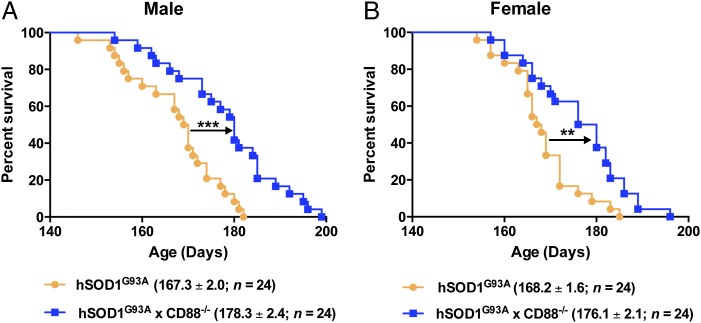Lobsiger et al. (1) recently demonstrated that superoxide dismutase 1 (SOD1) transgenic mice deficient in complement components C1q and C3 do not have extended survival, concluding that global complement activation does not affect overall disease in amyotrophic lateral sclerosis (ALS). Complement activation has long been implicated in the pathogenesis of ALS, with numerous clinical and animal studies demonstrating strong complement factor up-regulation, including C1q and C3, in regions of motor neuron death (2). Intriguingly, in the study by Lobsiger et al. C3- (and C1q-) deleted SOD1 mice did not show alterations in survival or motor neuron estimates, and this is interpreted by the authors as complement activation not contributing to ALS mice neurotoxicity. Indeed, in figure S1 of their article, Lobsiger et al. present three C3-dependent pathways of complement activation (classic, lectin, and alternative). However, one point missing in this report, and perhaps overlooked by the casual reader, is that there is now a well-described fourth pathway of complement activation, termed the “extrinsic pathway,” which can bypass the traditional upstream activation pathways that are reliant on complement factor C3.
It has long been known that serine proteases outside of the complement system are able to directly cleave C3 and C5 to generate bioactive complement fragments and initiate downstream pathway activation. Indeed, a seminal study in 2006 showed that C3-deleted animals (the same mice as used by Lobsiger et al.) are able to generate downstream C5a in the absence of traditional C3 convertase formation, through compensatory up-regulation of thrombin activity to cleave C5 directly (3). It is also now well established that individual cells are able to generate bioactive complement fragments, such as C3a and C5a, independent of the canonical activation pathways. For example, our group has shown that cortical neurons generate their own C5a in vitro, which increases neuronal death during metabolic stress (4), suggesting that similar pathways may be active in dysfunctional motor neurons in ALS. In support of this finding, we have shown that SOD1G93A ALS rats treated with a selective C5a receptor (CD88) antagonist have extended survival (5), and have also confirmed that CD88-deleted SOD1G93A mice have a similarly extended survival (Fig. 1).
Fig. 1.
The C5a receptor CD88 contributes to disease progression in the SOD1G93A genetic model of ALS. Kaplan–Meier plot of ages (in days) in which SOD1G93A mice with normal (CD88+/+, orange line) or fully deleted (CD88−/−, blue line) CD88 reached end-stage of disease (complete hindlimb paralysis and an inability to right itself once placed on its back) in males (A) and females (B). Average (±SEM) ages of the disease end stages are also shown. SOD1G93A mice lacking C5a signaling via CD88 show a significant extension in survival compared with control SOD1G93A mice in both sexes, demonstrating a pathogenic role for C5a in this mutant ALS mouse model. n = 24 mice per group: P = 0.0002 (A) and P = 0.002 (B), log-rank test.
In conclusion, although the study by Lobsiger et al. demonstrates a lack of a significant pathogenic role for C1q and C3 proteins (and thus upstream complement activation pathways) in SOD1 mutant ALS mice survival, it does not suggest—as the title indicates—that “global” complement activation is not pathogenic in ALS. Rather, this study and that of our own suggest that extrinsic activation of complement at the downstream step of C5 may be the key point at which complement-mediated neurotoxicity occurs in these ALS models. Therapeutic targeting of this terminal C5-C5a receptor axis with selective antagonists, or C5 inhibitory molecules, could therefore still be potential clinical candidates to slow disease progression in ALS.
Footnotes
The authors declare no conflict of interest.
References
- 1.Lobsiger CS, et al. C1q induction and global complement pathway activation do not contribute to ALS toxicity in mutant SOD1 mice. Proc Natl Acad Sci USA. 2013;110(46):E4385–E4392. doi: 10.1073/pnas.1318309110. [DOI] [PMC free article] [PubMed] [Google Scholar]
- 2.Lee JD, et al. Dysregulation of the complement cascade in the hSOD1G93A transgenic mouse model of amyotrophic lateral sclerosis. J Neuroinflammation. 2013;10(1):119. doi: 10.1186/1742-2094-10-119. [DOI] [PMC free article] [PubMed] [Google Scholar]
- 3.Huber-Lang M, et al. Generation of C5a in the absence of C3: A new complement activation pathway. Nat Med. 2006;12(6):682–687. doi: 10.1038/nm1419. [DOI] [PubMed] [Google Scholar]
- 4.Pavlovski D, et al. Generation of complement component C5a by ischemic neurons promotes neuronal apoptosis. FASEB J. 2012;26(9):3680–3690. doi: 10.1096/fj.11-202382. [DOI] [PubMed] [Google Scholar]
- 5.Woodruff TM, et al. The complement factor C5a contributes to pathology in a rat model of amyotrophic lateral sclerosis. J Immunol. 2008;181(12):8727–8734. doi: 10.4049/jimmunol.181.12.8727. [DOI] [PubMed] [Google Scholar]



